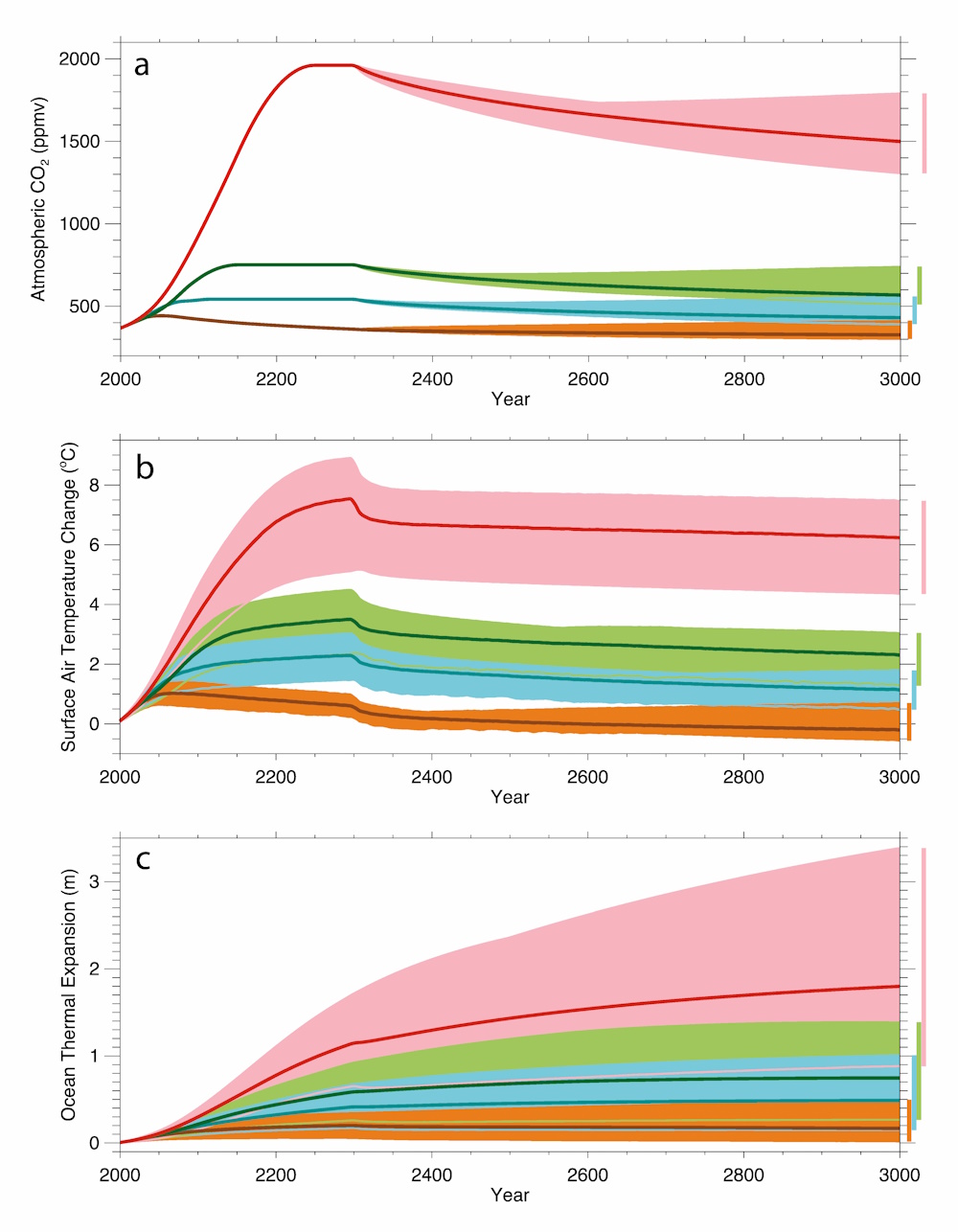20. If emissions of greenhouse gases were stopped, would the climate return to the conditions of 200 years ago?
No. Even if emissions of greenhouse gases were to suddenly stop, Earth’s surface temperature would require thousands of years to cool and return to the level in the pre-industrial era.
If emissions of CO2 stopped altogether, it would take many thousands of years for atmospheric CO2 to return to “pre-industrial” levels due to its very slow transfer to the deep ocean and ultimate burial in ocean sediments. Surface temperatures would stay elevated for at least a thousand years, implying a long-term commitment to a warmer planet due to past and current emissions. Sea level would likely continue to rise for many centuries even after temperature stopped increasing [Figure 9]. Significant cooling would be required to reverse melting of glaciers and the Greenland ice sheet, which formed during past cold climates. The current CO2-induced warming of Earth is therefore essentially irreversible on human timescales. The amount and rate of further warming will depend almost entirely on how much more CO2 humankind emits.
Scenarios of future climate change increasingly assume the use of technologies that can remove greenhouse gases from the atmosphere. In such “negative emissions” scenarios, it assumed that at some point in the future, widespread effort will be undertaken that utilizes such technologies to remove CO2 from the atmosphere and lower its atmospheric concentration, thereby starting to reverse CO2-driven warming on longer timescales. Deployment of such technologies at scale would require large decreases in their costs. Even if such technological fixes were practical, substantial reductions in CO2 emissions would still be essential.

Figure 9. If global emissions were to suddenly stop, it would take a long time for surface air temperatures and the ocean to begin to cool, because the excess CO2 in the atmosphere would remain there for a long time and would continue to exert a warming effect. Model projections show how atmospheric CO2 concentration (a), surface air temperature (b), and ocean thermal expansion (c) would respond following a scenario of business-as-usual emissions ceasing in 2300 (red), a scenario of aggressive emission reductions, falling close to zero 50 years from now (orange), and two intermediate emissions scenarios (green and blue). The small downward tick in temperature at 2300 is caused by the elimination of emissions of short-lived greenhouse gases, including methane. Source: Zickfeld et al., 2013
Page last updated: March 2020
Find out about the Royal Society's latest work on climate change and biodiversity
